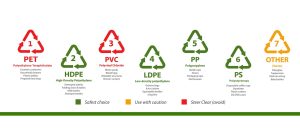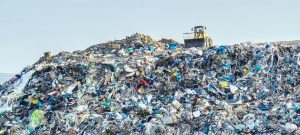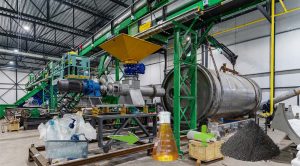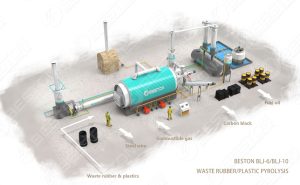In the relentless pursuit of sustainable solutions, the innovative realm of plastic pyrolysis machines stands as a beacon, offering a transformative approach to addressing the pressing issue of plastic waste. In this comprehensive exploration, we delve into the intricate process and groundbreaking technology behind the conversion of plastic into a valuable energy source.
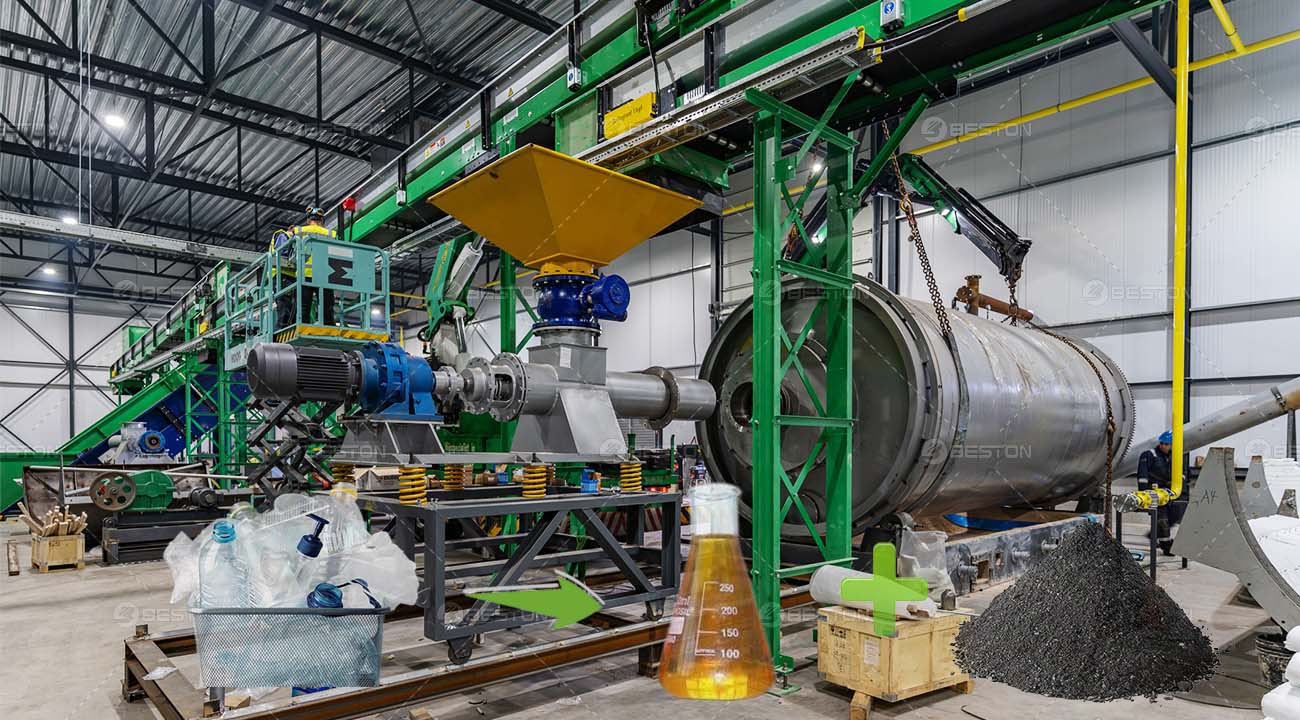
Understanding Plastic Pyrolysis
At the core of this revolutionary methodology is plastic pyrolysis, an advanced thermal degradation process that involves the conversion of plastic waste into fuel in the absence of oxygen. This highly efficient process not only mitigates environmental concerns but also yields significant economic benefits.
The Mechanism Unveiled
The journey begins with the introduction of plastic waste into the plastic pyrolysis machine, where it undergoes a complex series of controlled heating and chemical reactions. The absence of oxygen prevents combustion, ensuring that the plastic transforms into a valuable product rather than being incinerated into harmful emissions.
Thermal Decomposition at Its Pinnacle
Within the confines of the pyrolytic chamber, plastic polymers succumb to the relentless heat, breaking down into smaller hydrocarbon chains through a process known as thermal decomposition. This intricate dance of high temperatures and molecular rearrangement is the crux of the entire transformational process.
Catalysts: The Silent Alchemists
To enhance the efficiency of plastic pyrolysis machines, catalysts play a pivotal role in expediting the decomposition of complex polymers. These silent alchemists facilitate the breakdown of plastics into valuable byproducts, including liquid fuel, gases, and char.
Yielding Liquid Gold
The highlight of the process is the production of liquid fuel – a refined product with diverse applications. This liquid gold, often referred to as pyrolysis oil or plastic oil, harbors immense potential as a source of energy, serving as a sustainable alternative to traditional fossil fuels.
The Ingenious Design of Plastic Pyrolysis Machines
Engineering Excellence
Plastic pyrolysis machine exemplifies engineering marvels, with their intricate design catering to the complexities of the pyrolytic process. These machines are equipped with cutting-edge technology, ensuring optimal performance and resource utilization.
Reactor Configurations: Tailoring Efficiency
The heart of the plastic pyrolysis machine lies in its reactor, where the magic of transformation unfolds. Various configurations, such as batch, semi-continuous, and continuous reactors, allow for flexibility in processing different types of plastic waste with varying compositions.
Batch Reactors: Precision in Small Quantities
Ideal for smaller-scale operations, batch reactors offer precise control over the pyrolytic process. This configuration is particularly adept at handling specific types of plastic waste, ensuring a meticulous conversion into valuable fuel.
Semi-Continuous Reactors: Striking a Balance
For a more balanced approach, semi-continuous reactors combine elements of both batch and continuous systems. This configuration strikes a harmonious chord between precision and efficiency, making it a preferred choice for mid-scale operations.
Continuous Reactors: Streamlining Efficiency
In large-scale operations, continuous reactors take center stage, offering a streamlined and continuous flow of plastic waste through the pyrolytic process. This configuration maximizes efficiency and is well-suited for industrial-scale transformations.
Environmental Implications and Advantages
Mitigating Plastic Pollution
The adoption of continuous pyrolysis machine holds significant promise in addressing the pervasive issue of plastic pollution. By diverting plastic waste from traditional disposal methods, these machines contribute to a cleaner environment and a sustainable future.
Reducing Carbon Footprint
Unlike conventional incineration methods, plastic pyrolysis stands out for its ability to generate energy without exacerbating the carbon footprint. The process yields cleaner energy sources, aligning with the global imperative to reduce greenhouse gas emissions.
Challenges and Future Prospects
Technological Challenges
While the potential of plastic pyrolysis machines is immense, challenges persist on the technological front. Continuous research and development are essential to enhance the efficiency of the pyrolytic process, optimize catalyst utilization, and improve the overall sustainability of the technology.
Economic Viability
The widespread adoption of plastic pyrolysis as a mainstream waste-to-energy solution hinges on its economic feasibility. As technology advances and economies of scale come into play, the cost-effectiveness of these machines is likely to improve, making them more accessible for various industries. If you have plans to invest in plastic pyrolysis projects, please contact Beston Group Co., Ltd.
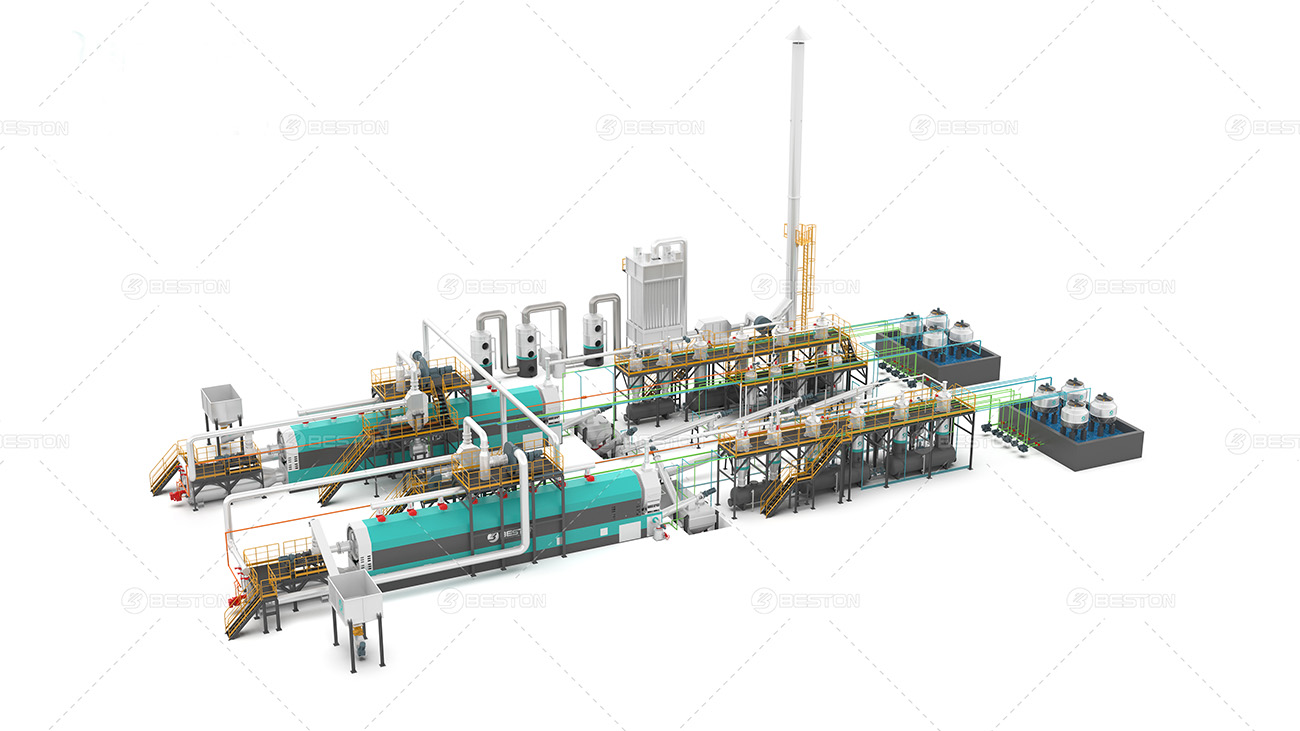
Conclusion
In the intricate dance of thermodynamics and molecular rearrangement, plastic pyrolysis machines emerge as formidable allies in the battle against plastic waste. As we navigate the complex landscape of sustainable solutions, the fusion of cutting-edge technology and environmental consciousness propels us toward a future where plastic, once a menace, transforms into a valuable resource – a testament to human ingenuity in the face of environmental challenges.
